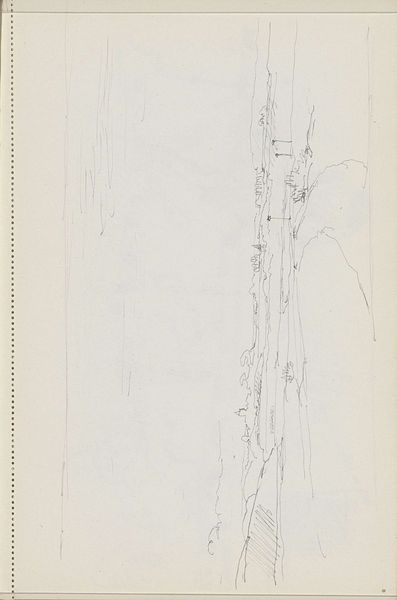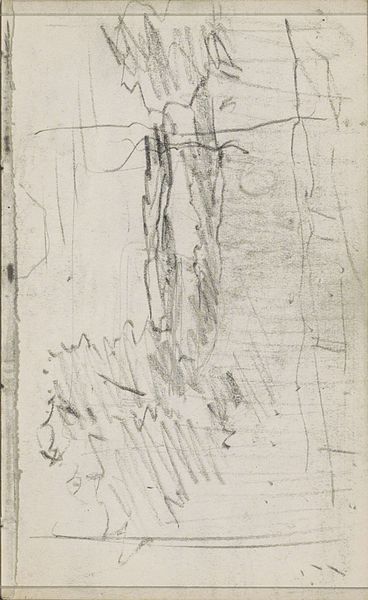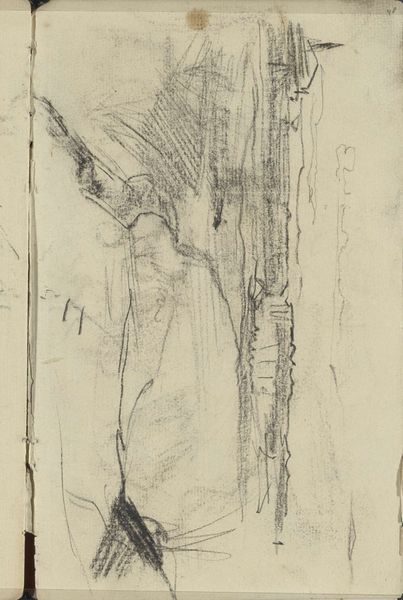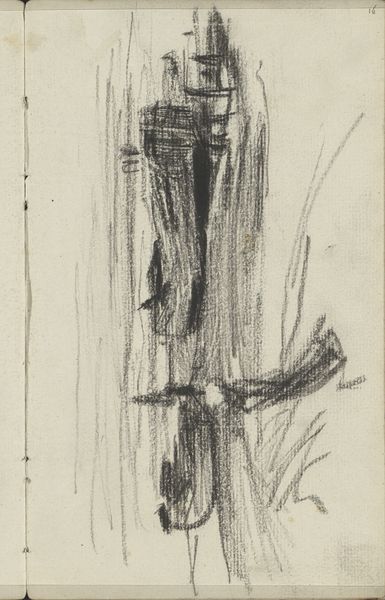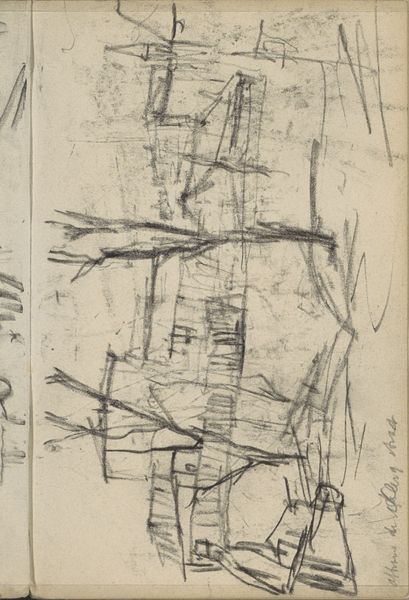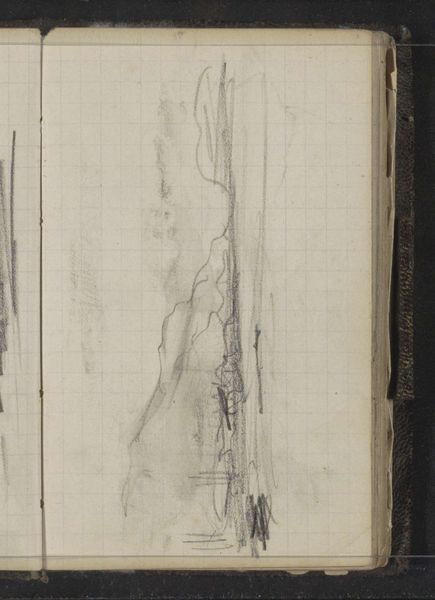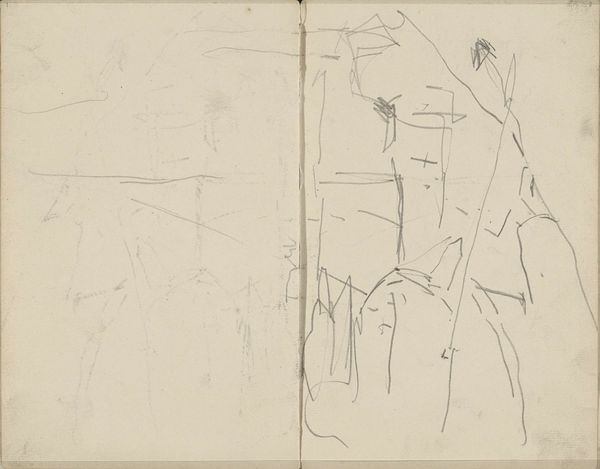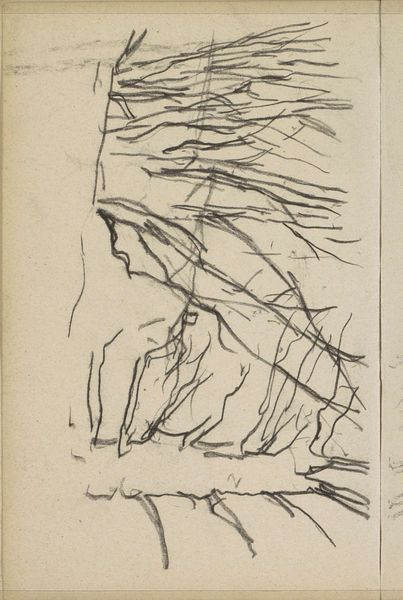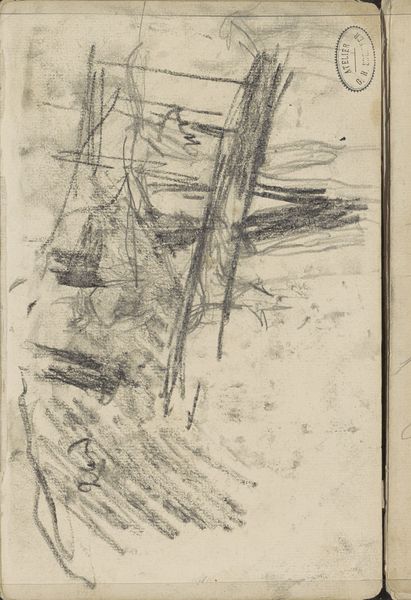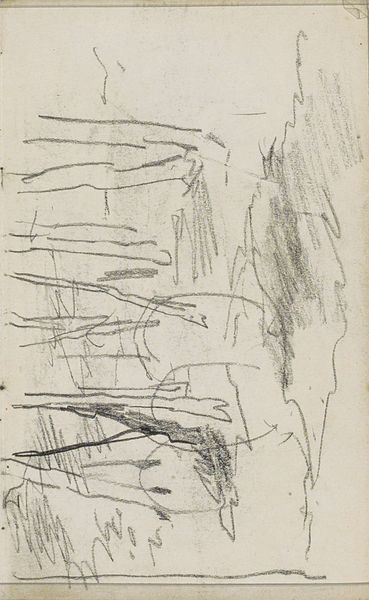
drawing, graphite
#
drawing
#
dutch-golden-age
#
impressionism
#
landscape
#
form
#
line
#
graphite
#
realism
Copyright: Rijks Museum: Open Domain
Curator: Here we have George Hendrik Breitner’s "Duinlandschap," or "Dune Landscape," a graphite drawing from around 1880 to 1882. It currently resides in the Rijksmuseum. Editor: My immediate impression is that it's remarkably sparse, almost melancholic. Those vertical lines... do they represent rain, or some sort of obscured view through branches? It certainly conveys a feeling of isolation. Curator: What's compelling to me is how Breitner uses the graphite to build a sense of space with such limited means. You see the pressure of the hand creating darker, more concentrated areas against the subtle grey wash. It makes me consider the cost and availability of drawing materials and how that affects mark-making and composition in an artist’s sketch. Editor: Absolutely, but it also makes me wonder about the historical and symbolic associations with the dune landscape in Dutch art. Dunes often represented a borderland, a space between the known and unknown, the cultivated and the wild. Curator: That transitional space then impacts the act of drawing. As the labor unfolds to capture fleeting visual data in specific location and time it represents an almost photographic interest to arrest the change of landscape. Editor: True, but I think we can read deeper meanings into these vertical forms. They’re vaguely anthropomorphic, suggesting a community of solitary figures standing sentinel against the horizon. Given the context of 19th-century urbanization, one might interpret the work as emblematic of individuals marginalized, lost in the wake of rapid societal change. Curator: I am intrigued with your interpretation, however for me it all comes back to materiality. What kind of graphite did Breitner use? Who produced it? How was the paper manufactured? These questions open a wider dialogue regarding the economics and culture around art making itself during the late 19th century. Editor: Ultimately, I think, whether one examines its materials or seeks a deeper visual language, Breitner's sketch resonates with the raw emotional experience of confronting an ambiguous landscape. Curator: A sentiment echoed whether looking closely at the materials, production or social associations behind the work’s creation.
Comments
No comments
Be the first to comment and join the conversation on the ultimate creative platform.

